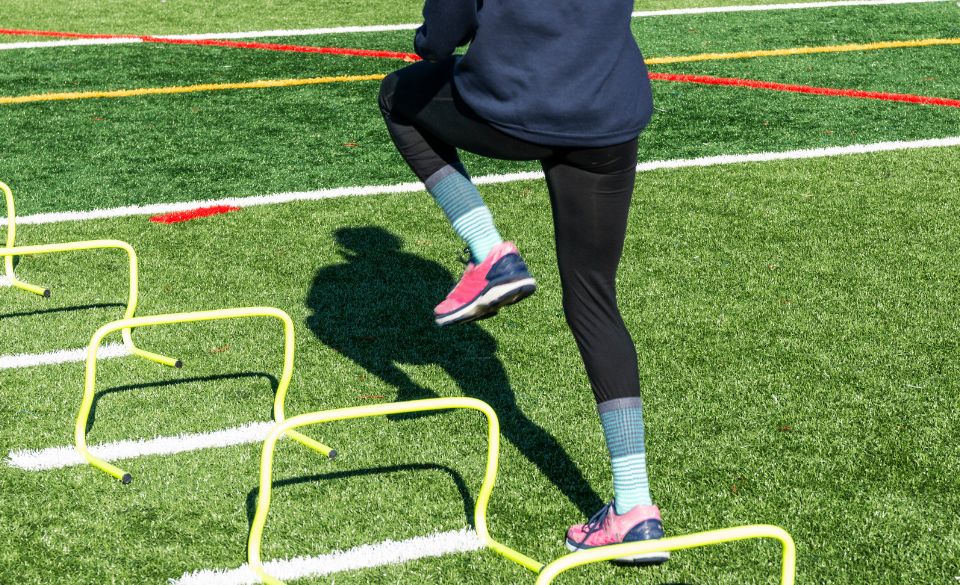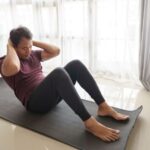
Boost Your Running Performance with These 9 Essential Drills
Page Contents
Are you looking to take your running performance to the next level? Whether you’re a seasoned marathoner or just starting out on your running journey, incorporating specific drills into your training routine can greatly enhance your running efficiency, speed, and overall performance. In this article, we’ll explore nine essential running drills that are backed by scientific studies to help you reach new heights in your running endeavors.
1. High Knees
One of the most effective running drills to improve your running form and stride length is high knees. By exaggerating the knee lift with each step, you engage your hip flexors, quadriceps, and core muscles, which ultimately leads to a more powerful and efficient running stride. A study conducted by the Journal of Strength and Conditioning Research found that high knee drills significantly improved running economy and stride frequency among trained runners.
2. Butt Kicks
Similar to high knees, butt kicks target different muscles and aspects of your running mechanics. This drill involves bringing your heels up towards your glutes with each stride. By doing so, you activate your hamstrings and improve your range of motion, which can help prevent injuries and increase your running speed. According to research published in the Journal of Sports Science and Medicine, incorporating butt kicks into your warm-up routine can lead to enhanced running performance and lower injury risk.
3. A-Skips
A-skips are an excellent drill for improving coordination, power, and explosive strength. This drill involves skipping while driving the knee of the non-supporting leg up toward your chest, creating a high knee action. A study published in the European Journal of Applied Physiology found that A-skips increased leg power and improved sprint performance among elite sprinters. Incorporating A-skips into your training routine can also enhance your running economy and help you maintain proper form during longer runs.
4. Lateral Shuffles
Lateral shuffles are a great drill for targeting your hip abductor muscles, which are essential for stabilizing your pelvis and maintaining proper running mechanics. By performing quick and controlled side-to-side movements, you improve your balance, agility, and lateral strength. A study published in the Journal of Orthopaedic & Sports Physical Therapy demonstrated that lateral shuffles improved hip muscle strength and reduced knee valgus motion, thus reducing the risk of common running injuries like iliotibial (IT) band syndrome.
5. Skipping
Skipping isn’t just for kids—it’s a highly effective running drill that can help improve your running mechanics and boost your speed. Skipping involves a combination of explosive power and coordination, making it an excellent exercise for strengthening the muscles in your lower body and enhancing your stride length. A study published in the International Journal of Sports Medicine showed that skipping drills significantly improved running economy and vertical jump performance among young athletes.
6. Hill Sprints
Hill sprints are a challenging yet rewarding drill that can significantly improve your speed, power, and cardiovascular endurance. Running uphill forces your body to work against gravity, engaging more muscles and increasing the intensity of your workout. A study published in the Journal of Strength and Conditioning Research found that incorporating hill sprints into a training program improved running economy, maximum speed, and overall performance among competitive distance runners.
7. Single-Leg Hops
Single-leg hops are an excellent drill for building strength, stability, and balance in your lower body, especially your calves and ankles. By hopping on one leg repeatedly, you develop the necessary power and stability required for efficient running. Research published in the Scandinavian Journal of Medicine & Science in Sports showed that incorporating single-leg hops into a training program led to improvements in running economy and enhanced performance among recreational runners.
8. Plyometric Jumping Exercises
Plyometric jumping exercises, such as box jumps and squat jumps, are fantastic for developing explosive power and increasing your running speed. These drills involve quick and powerful movements that engage your leg muscles and improve your ability to generate force. A study published in the Journal of Strength and Conditioning Research demonstrated that plyometric training significantly improved running economy, maximal running velocity, and vertical jump height in endurance runners.
9. Stride Outs
Stride outs, also known as strides or relaxed sprints, are short bursts of faster running that help improve your running economy, speed, and running form. By gradually accelerating to near-maximum speed over a short distance and maintaining that speed for a few seconds, you train your body to become more efficient and comfortable at higher speeds. Research published in the Journal of Sports Sciences showed that incorporating stride outs into a training program improved running economy and performance among distance runners.
Additional Considerations for Incorporating Running Drills
While the nine essential running drills discussed above can greatly enhance your running performance, it’s important to keep a few additional considerations in mind to maximize their effectiveness and ensure your safety. Here are some key points to remember:
Warm-Up and Cool-Down
Before diving into any intense running drills, it’s crucial to properly warm up your muscles and prepare your body for the workout. Begin with a dynamic warm-up routine that includes exercises like jogging, lunges, leg swings, and arm circles to increase blood flow and loosen up your muscles. Similarly, after completing your drills, dedicate time to cool down with static stretches and light jogging to gradually bring your heart rate down and prevent muscle soreness.
Gradual Progression
When incorporating running drills into your training routine, it’s important to progress gradually. Start with shorter distances, slower speeds, and lower intensity to allow your body to adapt and avoid overexertion or injury. As your fitness and proficiency improve, gradually increase the duration, intensity, or complexity of the drills. Listen to your body and avoid pushing beyond your limits too quickly.
Consistency and Variety
Consistency is key when it comes to reaping the benefits of running drills. Aim to incorporate them into your training routine on a regular basis, ideally 2-3 times per week. However, it’s also important to maintain variety in your workouts to avoid plateauing and keep your training interesting. Mix up the drills you perform and experiment with different combinations to challenge your body in various ways.
Seek Professional Guidance
If you’re new to running drills or have specific goals in mind, seeking guidance from a running coach or fitness professional can be highly beneficial. They can provide personalized advice, tailor drills to your specific needs, and help you progress safely and effectively. Additionally, they can analyze your running form and provide feedback to ensure you’re performing the drills correctly, maximizing their benefits.
In conclusion, incorporating the nine essential running drills into your training routine, along with following the additional considerations mentioned above, can significantly boost your running performance. Remember to warm up, progress gradually, stay consistent, and seek professional guidance when needed. By dedicating time and effort to these drills, you’ll be well on your way to achieving your running goals and unlocking your full potential as a runner.



